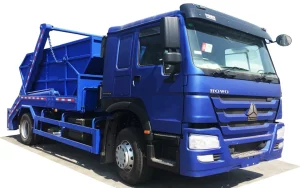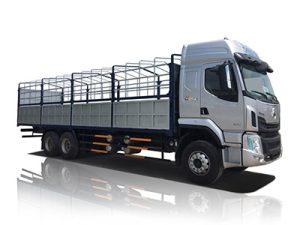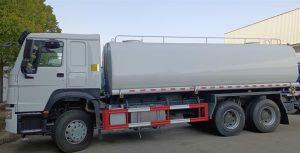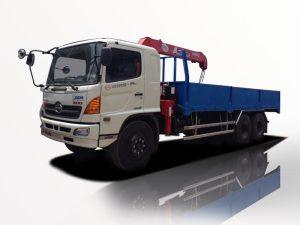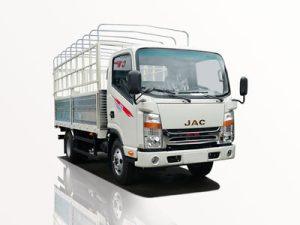Monday to Saturday - 8:00 -17:30
Understanding Side Loader Garbage Trucks: Features, Benefits, and Usage
In the modern waste management landscape, efficiency and safety are paramount. Side loader garbage trucks have emerged as a significant innovation in the industry, revolutionizing how waste is collected. This article delves into the complexities of side loader garbage trucks, exploring their functionalities, operational benefits, and real-world applications.
What is a Side Loader Garbage Truck?
A side loader garbage truck is a type of waste collection vehicle specifically designed to pick up and load waste from the side of the truck. Unlike traditional rear loaders, which require manual labor to lift bins or containers at the back, side loaders utilize automated systems to streamline the collection process. This design enhances worker safety, minimizes labor costs, and increases operational efficiency.
Key Features of Side Loader Garbage Trucks
1. Automated Loading Mechanism
The most distinctive feature of a side loader is its automated loading mechanism. Operated by hydraulic arms, the side loader can lift and dump waste containers into the truck without requiring manual intervention. This feature not only speeds up the collection process but also reduces the risk of injury to employees.
2. Enhanced Safety Features
Safety is a top priority in waste management. Side loader trucks often come equipped with various safety features, including:
- Rearview Cameras: To provide drivers with better visibility of their surroundings.
- Safety Alerts: Audio and visual alerts to warn pedestrians and other vehicles during collection.
- Robust Design: Reinforced structures to withstand heavy impacts and wear.
3. Compact Design
Side loaders tend to have a more compact design compared to other garbage trucks. This makes them more maneuverable in tight urban environments and residential areas where space is often limited. Their size allows for efficient navigation without compromising on load capacity.
4. Efficient Waste Compaction
Most side loader garbage trucks feature advanced compaction systems that optimize the space within the truck. Efficient compaction means that more waste can be collected in a single trip, reducing the frequency of collections and overall fuel consumption.
5. Versatility in Collection
Side loaders are versatile; they can manage a variety of waste types, including recycling, organics, and general refuse. This adaptability is essential in fulfilling different municipal waste management programs.
Benefits of Using Side Loader Garbage Trucks
1. Increased Productivity
The automation and efficiency of side loaders translate directly into increased productivity. By minimizing the time spent on each collection, waste management companies can cover more ground and serve larger areas without increasing labor costs.
2. Cost-Effective Operations
While the initial investment in side loader garbage trucks may be higher, the long-term savings in labor, fuel, and maintenance costs can be substantial. Automating the loading process reduces reliance on manual labor, which can decrease operational costs significantly.
3. Reduced Risk of Injury
Worker safety is paramount in waste management, and side loaders enhance safety by reducing manual handling requirements. This lowers the incidence of workplace injuries, resulting in fewer compensation claims and a healthier workforce.
4. Environmental Benefits
Efficient waste collection leads to fewer trips to landfills, reducing fuel consumption and greenhouse gas emissions. By effectively managing waste streams, municipalities can enhance their sustainability efforts and contribute positively to local environments.
How Side Loader Garbage Trucks Work
1. Operational Mechanism
Side loader trucks are equipped with hydraulic arms that extend and retract. These arms grip the waste containers and lift them, emptying their contents into the truck’s compaction area. The automation of this process allows for faster collection and eliminates the need for drivers and helpers to lift bins manually.
2. Loading Procedure
The loading procedure typically follows these steps:
- The operator positions the truck next to the waste container.
- Hydraulic arms extend to grasp the container.
- The container is lifted and tilted to empty its contents into the truck.
- The arms retract, and the truck moves on to the next location.
3. Maintenance and Care
Proper maintenance is crucial for the longevity and performance of side loader garbage trucks. Regular checks should include:
- Inspecting hydraulic systems for leaks.
- Checking the compaction system for optimal performance.
- Ensuring safety features are functional.
- Performing routine engine checks and servicing.
Examples of Side Loader Garbage Trucks
| Model | Manufacturer | Payload Capacity | Key Features |
|---|---|---|---|
| Peterbilt 320 | Peterbilt Motors Company | 22,000 lbs | Automated loading, safety cameras, compact design |
| Freightliner M2 106 | Freightliner | 25,000 lbs | Efficient compaction, advanced safety features |
| Kenworth T880 | Kenworth | 27,000 lbs | Flexible container handling, durable build quality |
| International DuraStar | International Truck | 24,000 lbs | User-friendly controls, reliable performance |
Implementation in Municipal Waste Management
1. Planning for Implementation
When municipalities consider adopting side loader garbage trucks, planning is essential. Key factors to evaluate include:
- Assessing the community’s waste collection needs and patterns.
- Determining budgetary constraints for equipment acquisition.
- Training personnel on the operation and safety protocols of side loaders.
2. Community Engagement
Engaging with the community can facilitate smoother transitions to side loader trucks. Municipalities can:
- Inform residents about changes to waste collection schedules.
- Educate the public on proper waste container usage.
- Gather feedback to improve collection efficiency.
Challenges and Considerations
1. Initial Investment Costs
The initial costs of purchasing side loader garbage trucks can be higher than traditional models. However, municipalities must weigh these costs against long-term savings in labor and operation efficiency.
2. Training Requirements
While side loaders offer many benefits, effective training for operators is crucial. New drivers will need to understand the technology and safety features inherent in these more sophisticated vehicles.
3. Maintenance and Technical Support
Maintenance is key to the longevity of side loader garbage trucks. Cities must develop a reliable maintenance program and consider having an in-house team or an agreement with a qualified service provider for timely support.
Future Trends in Side Loader Garbage Trucks
1. Electric Side Loader Trucks
As environmental concerns grow, the shift towards electric side loader garbage trucks is becoming more pronounced. These vehicles promise to reduce emissions and operating costs while offering the same operational capabilities as their diesel counterparts.
2. Smart Technology Integration
Emerging technologies such as IoT (Internet of Things) integration can optimize waste collection routes dynamically, reducing fuel consumption and improving efficiency. Real-time data can also assist municipalities in better managing waste volumes and collection frequencies.
3. Enhanced Safety Systems
The next generation of side loader garbage trucks may feature advanced safety systems, including autonomous driving capabilities, complex sensor systems, and enhanced driver assistance technologies to minimize accidents and increase operational safety.
FAQ Section
1. What is the average cost of a side loader garbage truck?
The average cost of a side loader garbage truck ranges from $200,000 to $300,000, depending on features and specifications.
2. How does a side loader truck compare to a rear loader?
Side loader trucks offer automated loading from the side, which can improve efficiency and safety, while rear loaders require manual loading, which can be labor-intensive.
3. Can side loader garbage trucks collect different types of waste?
Yes, side loader garbage trucks can collect various waste types, including recycling, general refuse, and organic material, depending on the configuration.
4. What are the maintenance requirements for side loader garbage trucks?
Regular maintenance includes inspections of hydraulic systems, compaction equipment, safety features, and routine engine checks to ensure optimal performance.
5. Are there funding opportunities for municipalities to acquire side loader garbage trucks?
Many federal and state programs provide grants or funding opportunities for municipalities looking to modernize their waste collection fleets, including side loader garbage trucks.



